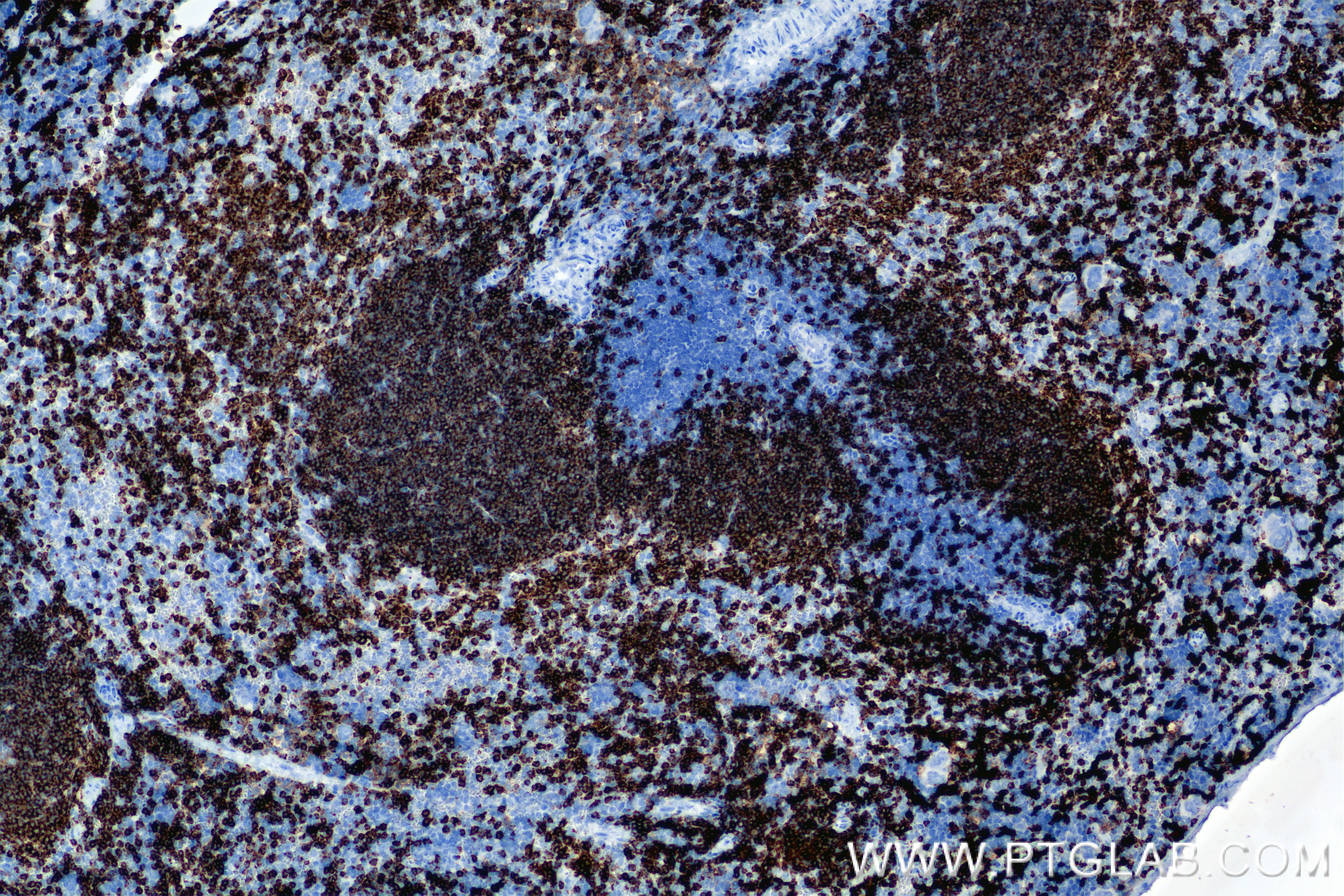验证数据展示
经过测试的应用
| Positive IHC detected in | mouse spleen tissue, rat spleen tissue Note: suggested antigen retrieval with TE buffer pH 9.0; (*) Alternatively, antigen retrieval may be performed with citrate buffer pH 6.0 |
推荐稀释比
| 应用 | 推荐稀释比 |
|---|---|
| Immunohistochemistry (IHC) | IHC : 1:1000-1:4000 |
| It is recommended that this reagent should be titrated in each testing system to obtain optimal results. | |
| Sample-dependent, Check data in validation data gallery. | |
产品信息
85881-3-RR targets CD79A in IHC, ELISA applications and shows reactivity with mouse samples.
| 经测试应用 | IHC, ELISA Application Description |
| 经测试反应性 | mouse |
| 免疫原 | CD79A fusion protein Eg1388 种属同源性预测 |
| 宿主/亚型 | Rabbit / IgG |
| 抗体类别 | Recombinant |
| 产品类型 | Antibody |
| 全称 | CD79A antigen (immunoglobulin-associated alpha) |
| 别名 | B-cell antigen receptor complex-associated protein alpha chain, Mb-1 |
| 计算分子量 | 25 kDa |
| GenBank蛋白编号 | NM_007655.3 |
| 基因名称 | Cd79a |
| Gene ID (NCBI) | 12518 |
| 偶联类型 | Unconjugated |
| 形式 | Liquid |
| 纯化方式 | Protein A purification |
| UNIPROT ID | P11911 |
| 储存缓冲液 | PBS with 0.02% sodium azide and 50% glycerol, pH 7.3. |
| 储存条件 | Store at -20°C. Stable for one year after shipment. Aliquoting is unnecessary for -20oC storage. |
背景介绍
CD79A, also named as B-cell antigen receptor complex-associated protein alpha chain or MB-1 membrane glycoprotein, is a 226 amino acid protein, which contains one ITAM domain and one Ig-like C2-type (immunoglobulin-like) domain. CD79A is expressed in B cell and localizes in the cell membrane. CD79A is required in cooperation with CD79B for initiation of the signal transduction cascade activated by binding of antigen to the B-cell antigen receptor complex (BCR) which leads to internalization of the complex, trafficking to late endosomes and antigen presentation. CD79A is also required for BCR surface expression and for efficient differentiation of pro- and pre-B-cells.
实验方案
| Product Specific Protocols | |
|---|---|
| IHC protocol for CD79A antibody 85881-3-RR | Download protocol |
| Standard Protocols | |
|---|---|
| Click here to view our Standard Protocols |



